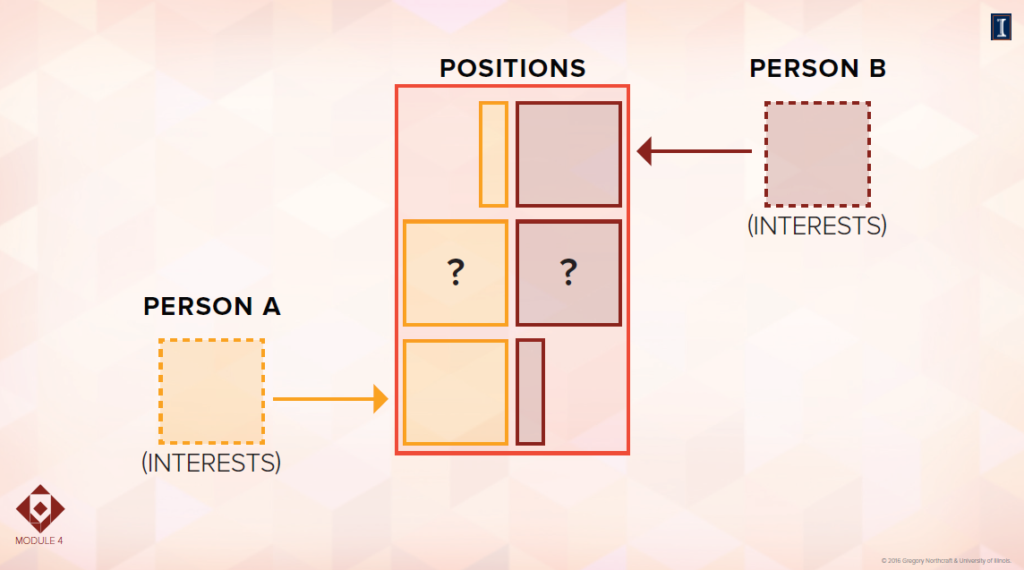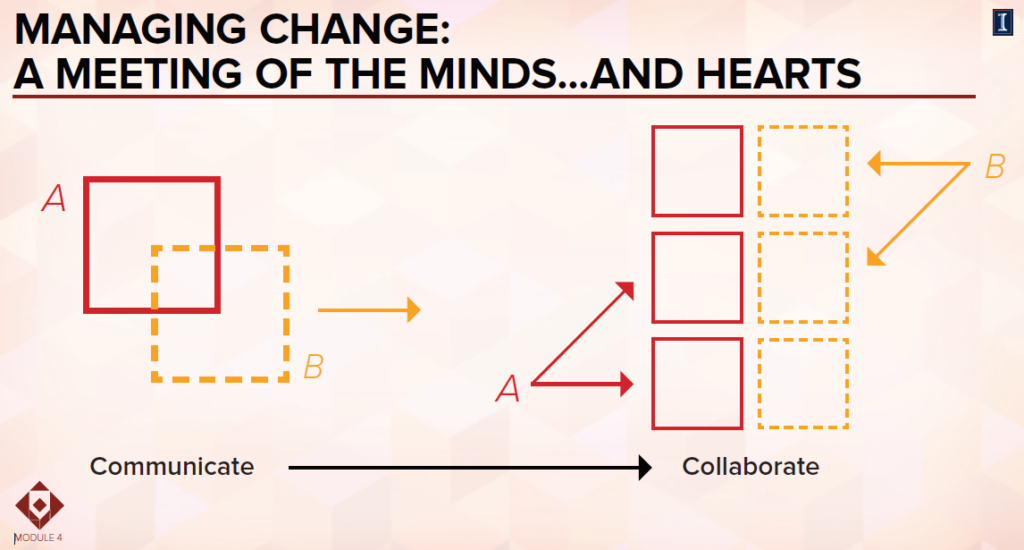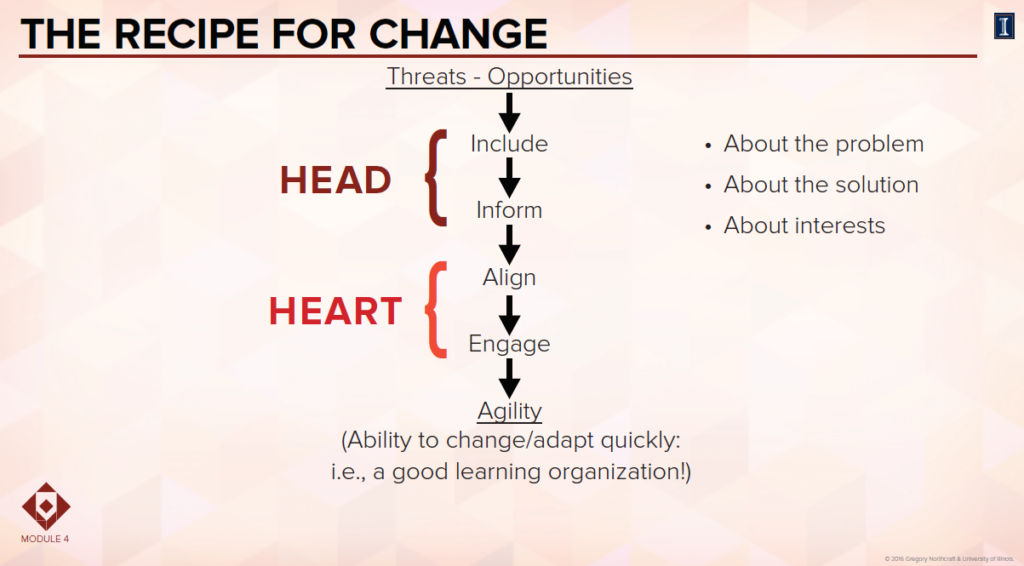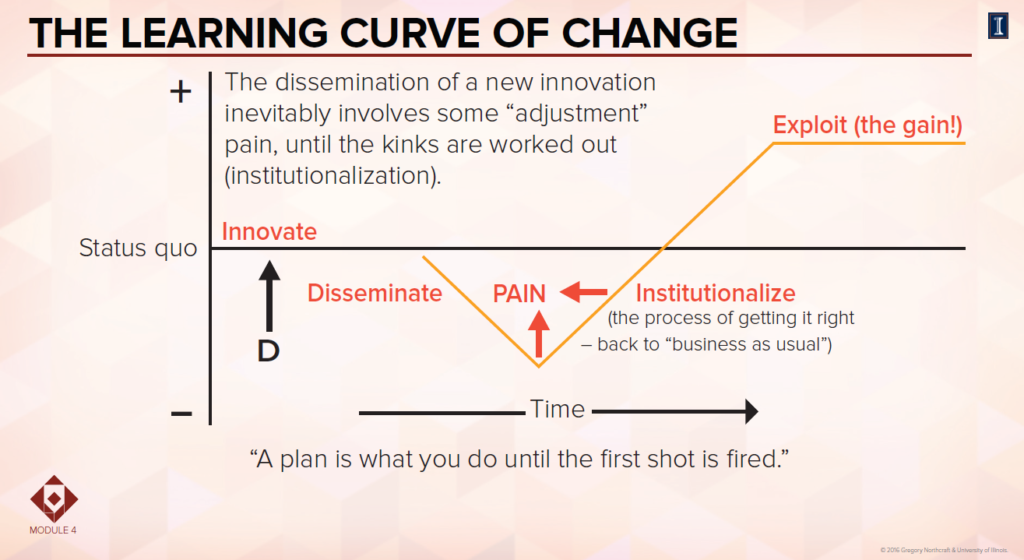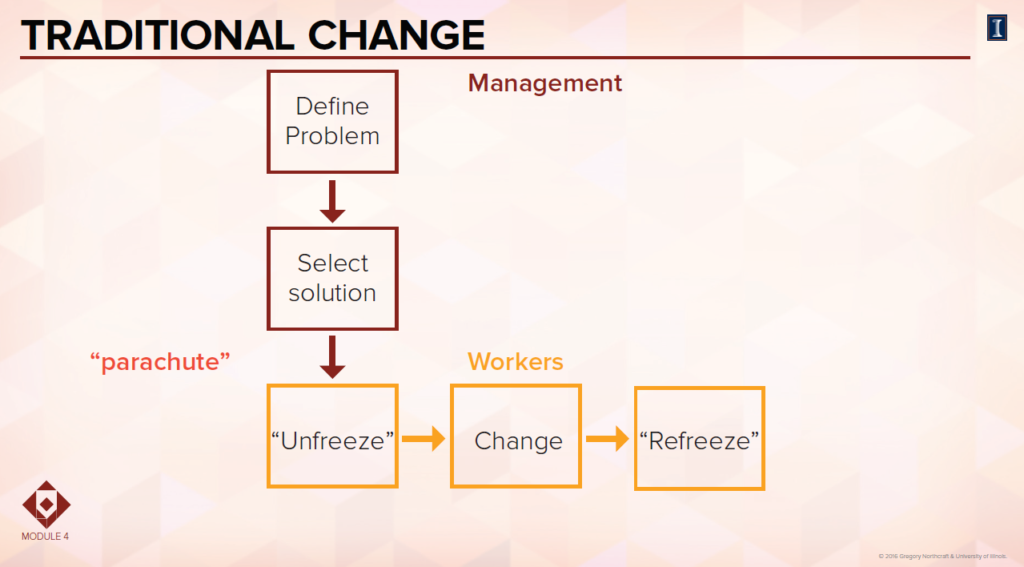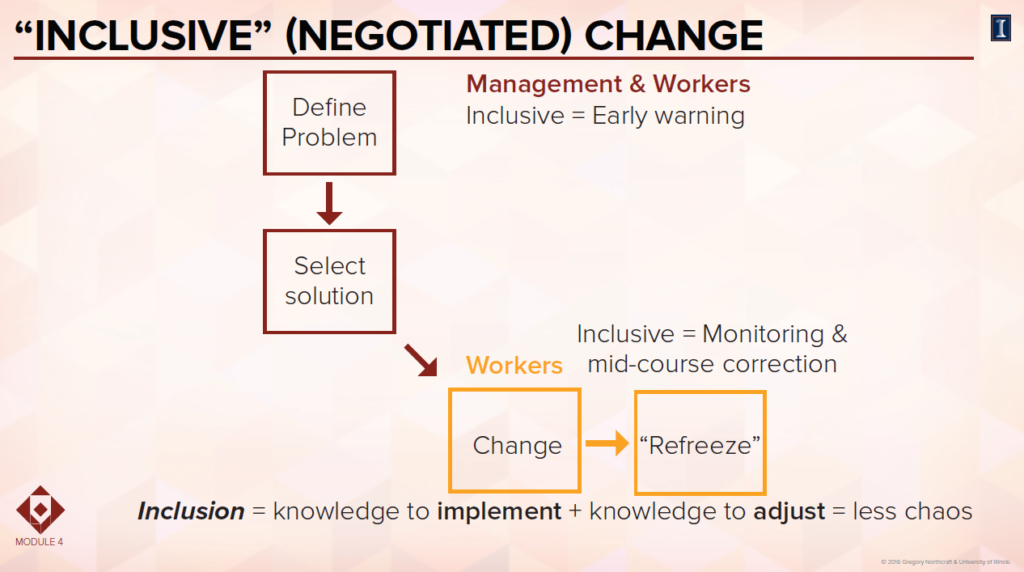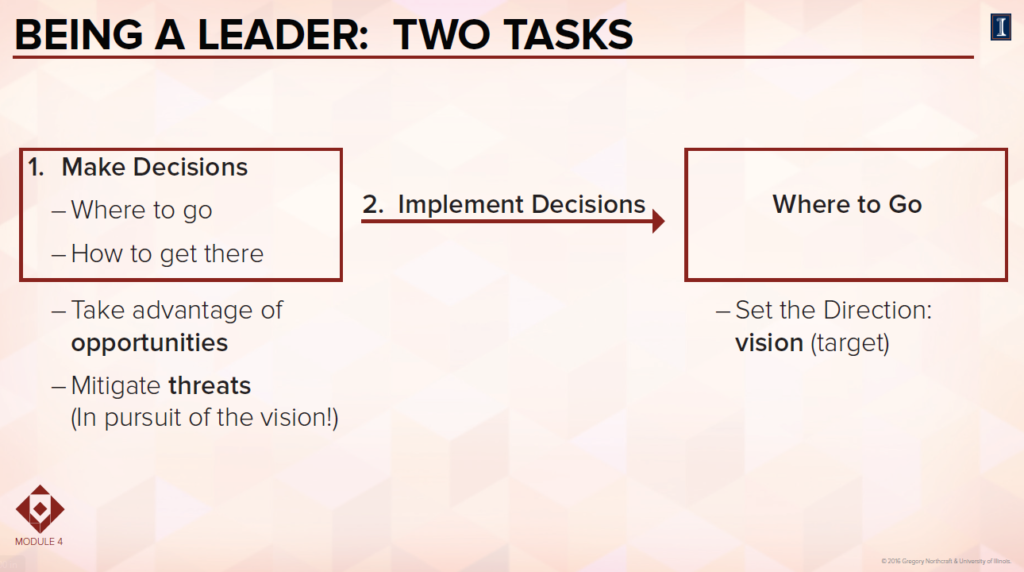Third and last post about the MOOC ‘Applications of Everyday Leadership‘ delivered by the University of Illinois at Urbana-Champaign, topic here is: ‘Leading Organizational Change’.
You can also find my notes about the two previous topics: Negotiation and Conflict Management.
Concepts of Leading Organizational Change
I) Making the decision
1) Thinking about change
Strategies: How to think about approaching the leadership of a change
Tactics: What specific things to do
2) Change as decision making
Making the decision: To address threats & opportunities
Implementing the decision
3) Sources of resistance
Not knowing, and being afraid that it will hurt you
Knowing, and being angry that it will hurt you
4) Leading change
- Leading change is about getting people to do things differently
- When you have power (authority), it may look like you can “dictate terms”
- But you can’t win if the other side won’t play (well)
- They’ll play (well) if they see your positions as vehicles to satisfy their interests
- Use dialogue to make your positions vehicles that satisfy their interests!
5) Interests vs Positions
- Positions are what we want: the changes we want to make
- Interests are why we want the positions: what we hope to accomplish with the changes we make
- Positions often appear incompatible or irreconcilable even when interests are
not
6) Leading change as…
- Interest alignment
- Identify both sides’ interests, work together to identify a position that satisfies more of both sides’ interests
- = aligned interests
- No one resists what satisfies their interests
7) Managing resistance
- Change fails when it produces conflict that cannot be effectively managed
- People do not resist what they see as a vehicle for satisfying their interests
- Dialogue can help them see that it is so
- Dialogue can help make it so
- Interests are often compatible even when positions are not
- Effort to align the interests of individuals and the company is not lost on “unaffected” others (employees)
II) Implementing the Decision
1) The “chaos” of change
First level effects: defined benefits
Second level effects:
- expanding benefits
- expanding problems (failure)
The bottom-line: 50% to 75% of new technology implementations fail; 90% of the failures are due to “human” or “managerial” (rather than technical) problems
2) The learning curve of change
3) Traditional change
4) Inclusive negotiated change
5) Conclusions on negotiated change
- Change works smoothly (motivationally!) when both sides interests are aligned
- Alignment is more likely to occur when we open up a dialogue about interests
- And use that dialogue to create positions (changes) that do more to satisfy both
sides’ interests - And use that dialogue to prepare for implementation that minimizes chaos
III) Vision
1) Being a leader: two tasks
2) Vision as target
The vision represents the end-point – the target that the leader is trying to accomplish.
3) Vision as motivator
Martin Luther King: “I have a dream…”
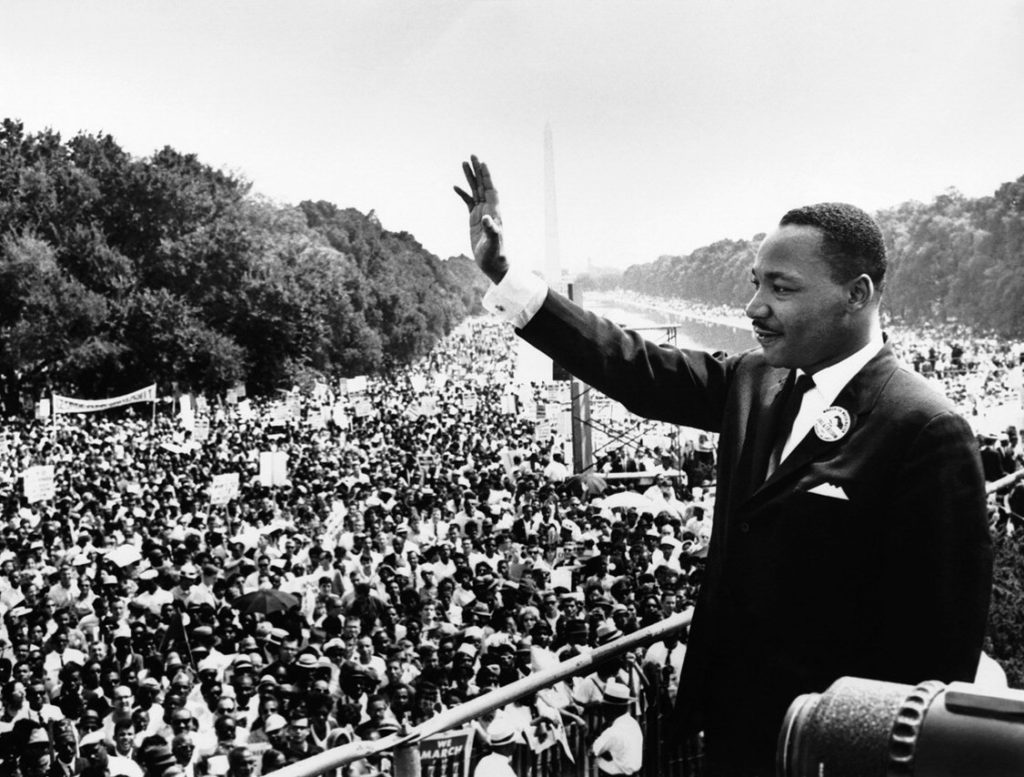 source:
source:
https://commons.wikimedia.org/wiki/File:USMC-09611.jpg
What makes this speech so influential?
The most influential discussions are discussions about the other side’s interests.
For a vision to be motivational – to influence others to work hard to achieve it –
the vision has to look like a vehicle to accomplish others’ goals. Others have to see the link between:
- the success of the vision (achievement of the organization’s goals) and
- their personal success (achievement of their own goals)
Vision as a vehicle to accomplish everyone’s goals: alignment of individual and
organizational goals
4) Path-goal leadership
- An individual demonstrates leadership to the extent that individual clarifies for others the path to achieving their goals.
- Others see the organizational goals as a vehicle for achieving their own goals.
- Clear alignment between individual and organizational goals
5) Vision as influential communication
Commitment and enthusiasm at implementation via the ownership of creation (inclusiveness):
- if you want others to “buy in” to your vision, get them to help create it
- getting them to help create the vision increases the likelihood that they will
understand how achieving the vision helps them achieve their personal goals - getting them to help create the vision allows them to help shape the vision to help them achieve their personal goals
6) Conclusions
A persuasive vision cannot be just about what the leader wants.
To get others to buy into the vision, others have to see how the vision will help them achieve their personal goals/interests: it requires alignment between individual and organizational goals.
Inclusiveness provides a roadmap for creating an attractive vision – an aligned vision that others will “buy into”.
Getting others involved in creating the vision:
- fosters commitment to the vision via ownership
- fosters commitment to the vision via understanding
- fosters commitment to the vision via allowing others to shape that vision to address their own interests

